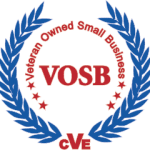The following steps dramatically influence performance:
- Clearly define, in simple, measureable terms, the routine performance results that are associated with success.
- Collect that routine performance data, by individual and/or group, which is associated with success.
- Quickly provide feedback to the individual and group based on those measured results.
| Consider this to be a continuous improvement process, where Steps 2 and 3 are repeated on a regular, frequent basis. |
This sounds easy, but too often we do not define success in quantifiable terms. Additionally, even if we define success, we do not actually collect and evaluate the results. Finally, if we provide feedback, we do it too late to positively impact performance.
If a manager allows poor performance to continue without corrective feedback, he or she inadvertently endorses subpar performance and over time creates an underperforming culture.
Sports provide an excellent example where all three steps occur in a timeframe that can truly impact performance and eventually success; many businesses do not!
This is commonly the case when companies acquire the services of Security Guards; they fail to adequately incorporate Steps 1 through 3. As a result, it is not uncommon to find dissatisfaction with Security Guard performance. For example:
- Guards sleeping
- Guards not reporting as scheduled
- Locations not being checked as scheduled
- Actions not taking place as scheduled
- Invoiced hours inconsistent with actual on-site hours
- Providers not responsive to needed corrections
- Reports are unclear, illegible, incomplete
- Etc, etc, etc
Step 1
The problem begins during the acquisition process. Far too frequently the only substantial discussion with the potential Security Guard Providers focuses on cost, e.g., how many guard hours? how much supervision? There is only limited discussion about expected Guard performance.
A critical aspect to creating a high performance Security Guard Force is to explain in clear terms what is success? Therefore, at the very beginning of the acquisition process, the Security User must define success.
The User in this case is not just the company’s Security Professional. It also includes the C Level manager who must pay for the service, i.e., the person whose bottom line is influenced by the Guard Force.
Collectively they must determine what is important and then define in clear measurable terms what Security Guard success entails. In the contractual world, a term frequently used to define those expected results is key performance indicator or KPI. Click here to request a list of suggested Guard Force KPIs
Following the determination of the Security Guard key performance indicators, the process begins to choose a new Security Guard Provider. Commonly the process begins with the User’s Request for Proposal (RFP) or Invitation for Bid (IOB) where the KPIs are clearly communicated to all potential bidders. It carries through to the winning Services Contract or Agreement where the KPIs are included in the written, signed Agreement and have contractual consequences. Finally they are translated into General and Special Orders by the Security Provider to explain, in guard terms, what is expected from each Security Guard and their Supervisors.
Step 2
During the acquisition process it is equally important to define in contractual terms how to measure, record, store and report the performance of the KPIs.
KPIs cannot be effectively and consistently recorded unless there is a Security Guard Verification system. The identification and selection of a verification system should be an integral part of the Bid/Contract process. It should be a KPI itself.
There are a variety of verification systems. You should specify a system that best meets your requirements rather than relying solely on the potential Provider’s recommendation. Click here to request a recommended Verification System Checklist.
- Many Systems are “one size fits all”. You must be able to easily tailor the System to your company’s specifications. The system you choose should have the capability to adapt to multiple sites, multiple internal organizations or multiple Providers based on your needs.
- It should be flexible, scalable, and easy to use.
- It should independent, objective, and transparent.
- Web based systems are easier to maintain, and they reduce the need for IT support compared to systems you buy, install, and maintain.
- It should record the performance of ALL on-site Security personnel. (Note most systems just monitor patrolling guards.)
- It should be able to record and report the performance associated with:
- People (all guards and their on-site supervisors)
- Locations
- Required Actions
- Important Observations
- Items (Compliance, Safety, etc)
- The hardware used for data collection should be rugged, reliable, and maintainable.
Step 3
Defining and measuring the KPIs are essential, but continuous improvement takes place only when the collected information is quickly and consistently used to correct Security Guard performance. (Avoid relying solely on the Provider’s weekly, bi-weekly, monthly “Audits”, because they are usually too broad, too subjective and too late.)
Using reports from the Verification system is a key to taking timely corrective action and then using later reports to monitor the impact of that action.
- Reports should be accessible by both authorized Users and Providers, using any computer, anywhere.
- Reports should include detail, summary, and comparison information.
- The System must make it easy to create Exception Reports that separate the important performance items from the massive amounts of routine information collected by the Verification system.
